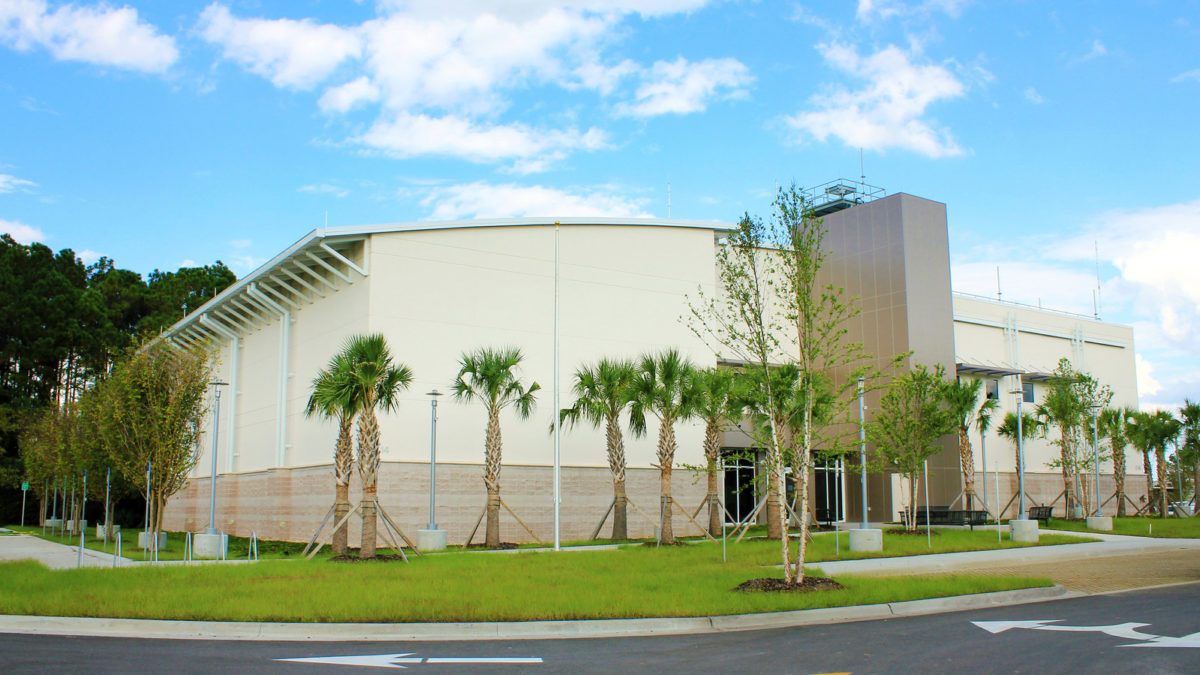
The new Broad Area Maritime Surveillance Center at Naval Air Station Jacksonville has received a prestigious engineering design award from the Georgia Chapter of the American Council of Engineering Companies. (PRNewsfoto/Burns & McDonnell)

The new Broad Area Maritime Surveillance Center at Naval Air Station Jacksonville has received a prestigious engineering design award from the Georgia Chapter of the American Council of Engineering Companies. (PRNewsfoto/Burns & McDonnell)
A new Command and Control Complex supporting the U.S. Navy’s Broad Area Maritime Surveillance (BAMS) operations at Naval Air Station Jacksonville is helping provide critically-needed support.
Designed by Burns & McDonnell, the new two-story, 31,000-square-foot Command and Control Complex has expanded capacity for intelligence analysis, planning and operational support for BAMS personnel. The facility is home to the P-8A Tactical Operations Center (TOC) for manned P-8A surveillance aircraft and the Navy’s new MQ-4C Triton Squadron supporting the Navy’s unmanned aerial vehicle (UAV) program. The Triton UAV program complements the Navy’s P-8A Poseidon long-range manned patrol aircraft by providing combat information and helping to locate hostile surface ships and submarines. The BAMS Center is now home to a ground-based, state-of-the-art mission and control center.
“Burns & McDonnell displayed exceptional performance on this task order,” says Shea Zahner, head of project management for Naval Facilities Air Command, Southeast.
The project received a State Award at the American Council of Engineering Companies of Georgia (ACEC Georgia) Engineering Excellence Awards — a high-profile contest recognizing the best engineering and construction projects in Georgia.
“It’s an honor to be recognized by ACEC Georgia and among some of the most innovative engineering and construction solutions in the state,” says Shawn DeKold, regional manager for the Burns & McDonnell Southeast Region Aviation & Federal group. “This project was challenging due to the evolving needs of the MQ-4C Triton Squadron supporting the Navy’s unmanned aerial vehicle (UAV) program. We’re proud that we were able to deliver an attractive new facility that helps the Navy meet program goals and objectives at a time of limited federal funding for these type of projects.”
The facility features a full range of enhanced security features designed to protect classified information, meets Leadership in Energy and Environmental Design (LEED) Silver requirements, combats external electromagnetic interference and has a number of energy conservation features such as sophisticated control systems, high-efficiency motors, occupancy lighting sensors and high-efficiency heating, ventilation and air conditioning (HVAC).
